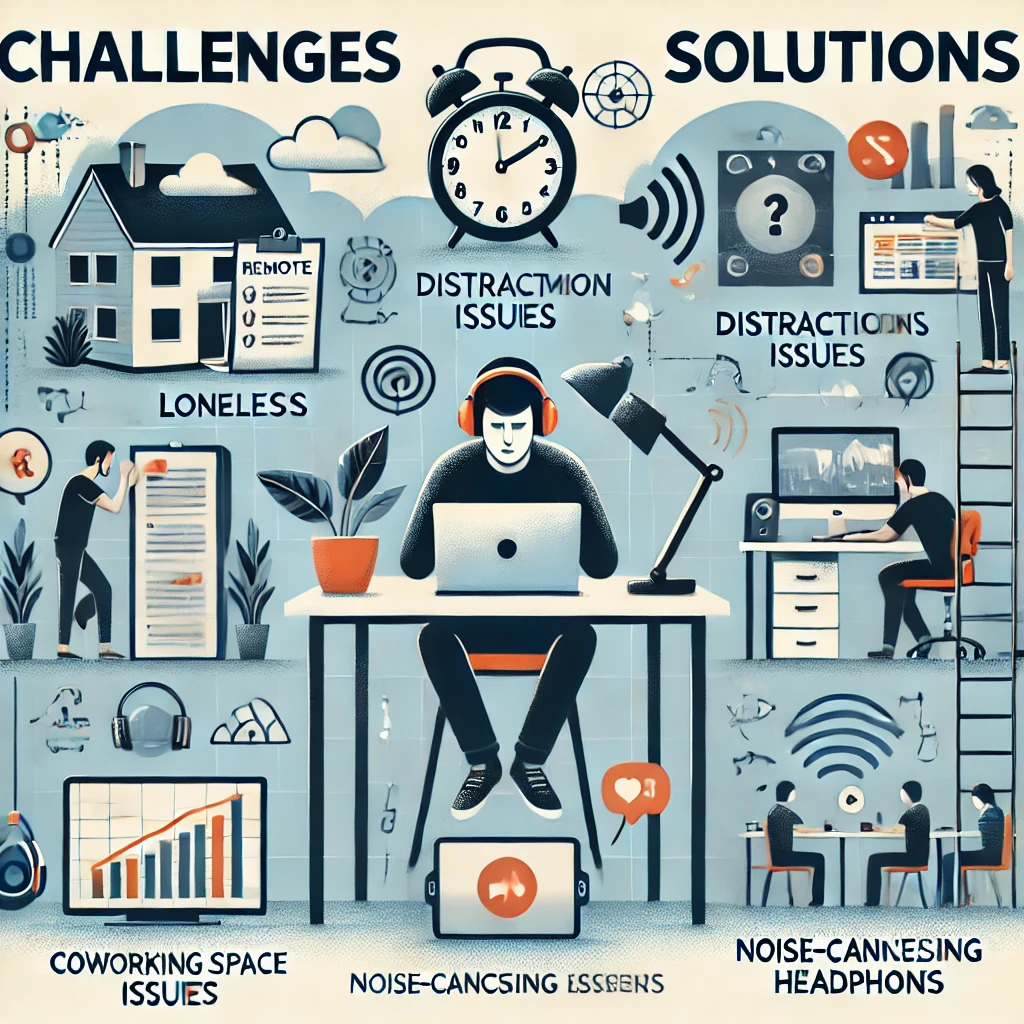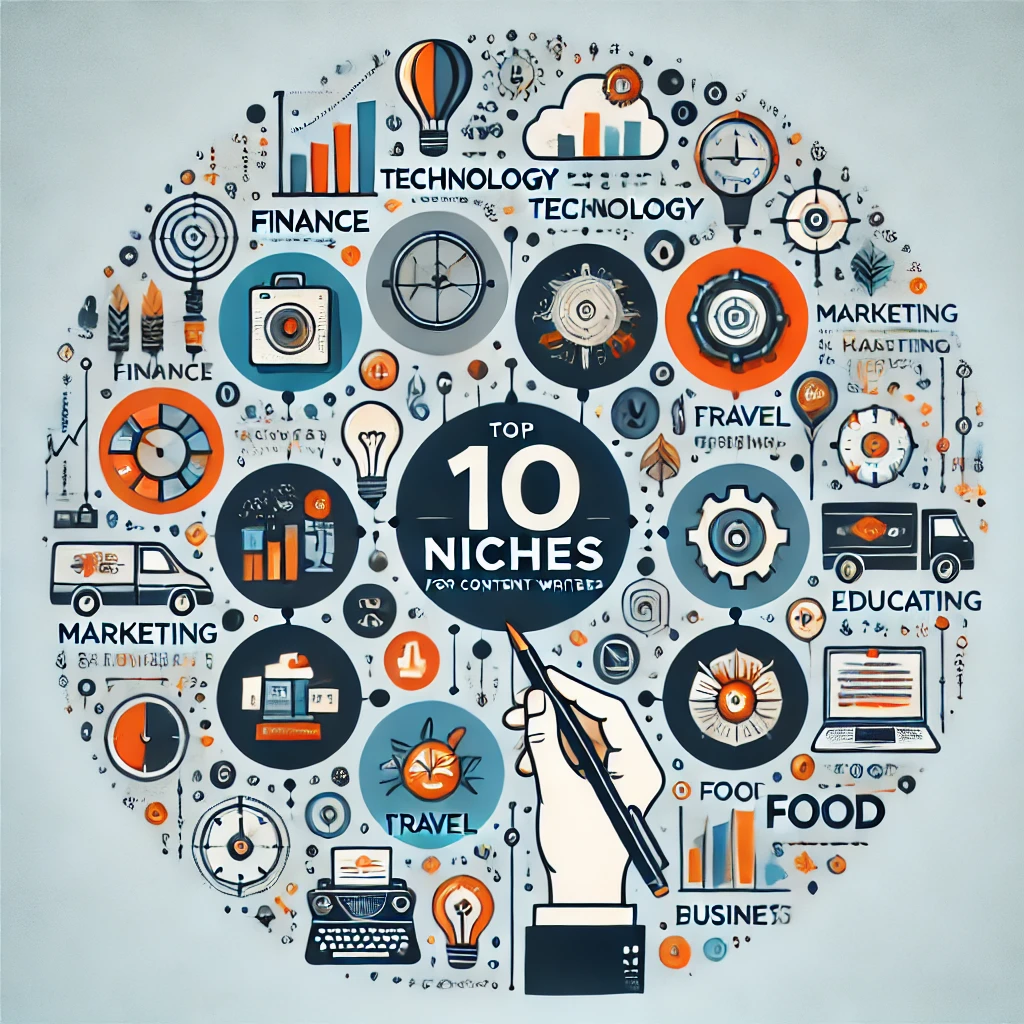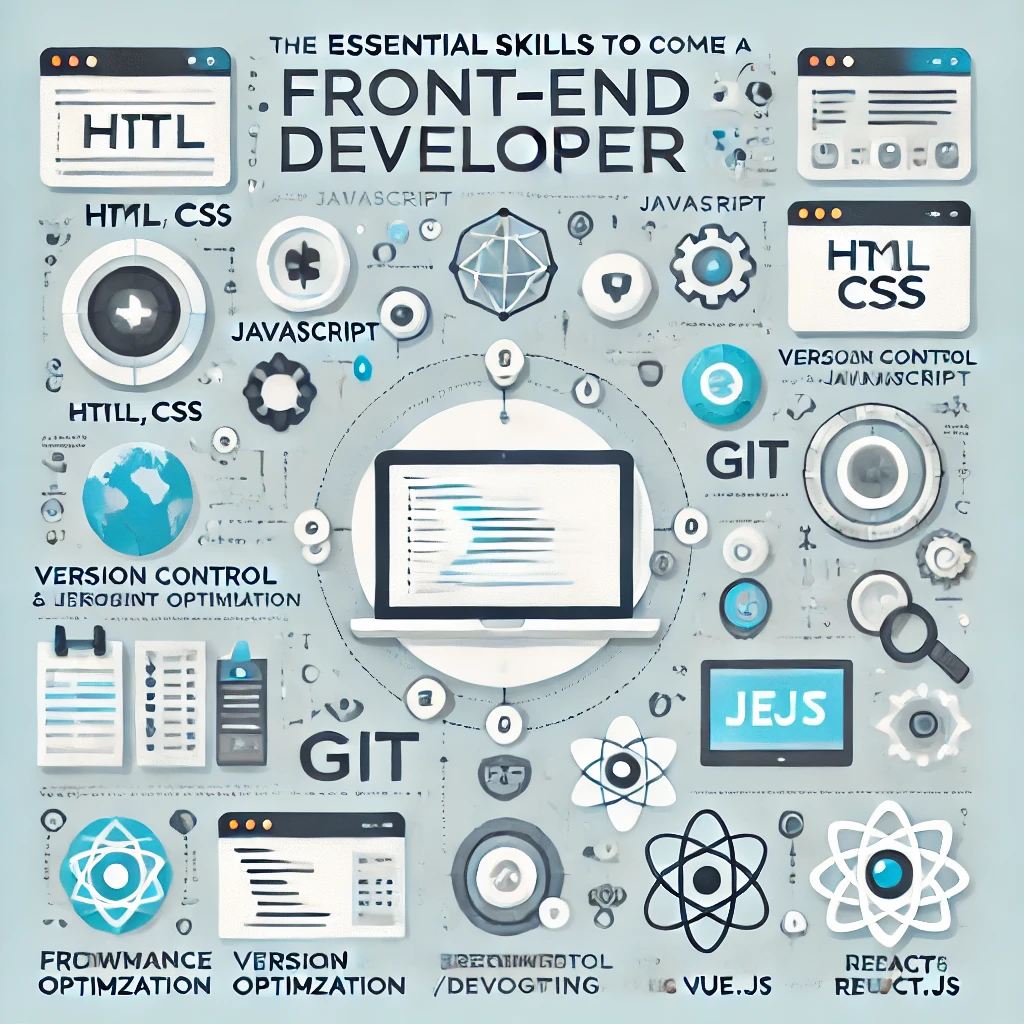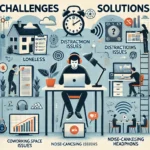Step-by-Step Guide on How to Become a Graphics Designer- Graphics designers are problem-solvers who communicate ideas visually, combining aesthetics with functionality. They must balance creativity with practical requirements like brand consistency and user needs. Graphics designers use their artistic abilities and technical expertise to create designs for websites, advertisements, social media, packaging, and more.
Step-by-Step Guide on How to Become a Graphics Designer
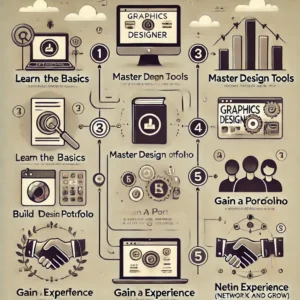
Responsibilities of a Graphics Designer.
Graphics designers play a good role in creating visually appealing content that communicates ideas effectively. Here’s a detailed look at their responsibilities:
1. Creating Visual Content.
Graphics designers create a wide range of visual materials, such as:
- Logos for businesses or brands.
- Brochures and flyers for marketing campaigns.
- Social media posts that engage online audiences.
- Website layouts and elements that improve user experience.
- Packaging designs that make products stand out on shelves.
Their job is to make sure each design grabs attention and serves its purpose.
2. Collaborating with Clients and Teams.
Graphics designers work closely with clients and teams to understand project requirements. This involves:
- Listening to client’s needs and understanding their goals.
- Brainstorming ideas with marketing or creative teams.
- Revising designs based on feedback until the client is satisfied.
Good communication skills are vital to ensure the final design matches expectations.
3. Using Design Software and Tools.
Graphics designers rely on professional tools to bring their ideas to life. Commonly used software includes:
- Adobe Photoshop for photo editing.
- Adobe Illustrator is used to create vector graphics like logos.
- Adobe InDesign is used to design books, magazines, and brochures.
- Figma and Sketch for web and app designs.
Mastering these tools allows designers to create professional-quality work.
4. Maintaining Brand Consistency.
When designing for a brand, consistency is key. Graphics designers must:
- Use the same colors, fonts, and styles that match the brand identity.
- Ensure that all designs align with the company’s message and tone.
- Create templates that can be reused for future projects.
This helps maintain a strong and recognizable brand image.
5. Solving Visual Problems.
A big part of a graphics designer’s job is problem-solving. This means:
- Turning abstract ideas into clear and appealing visuals.
- Finding creative ways to present information, like data visualizations.
- Adjusting designs to work on different platforms, such as mobile apps and print materials.
Designers must think critically and adapt their work to fit different needs.
6. Keeping Up with Trends and Technology.
The world of design is always changing. Graphics designers need to stay updated by:
- Learning about new trends, like minimalism or 3D graphics.
- Experimenting with new tools and techniques.
- Following industry leaders and attending workshops or webinars.
RELATED BLOG: How to Become a Technical Writer
Skills Required to Become a Graphics Designer.
To become a successful graphics designer, you need creative, technical, and personal skills. Let’s break these down into simple and easy-to-understand sections.
1. Technical Skills.
- Mastery of Design Software: Graphics designers use tools like Adobe Photoshop, Illustrator, and InDesign daily. These programs help create everything from logos to marketing materials. Beginners can also explore simpler tools like Canva to start.
- Typography Knowledge: Typography is the art of arranging text in a design. As a designer, you need to understand how different fonts affect mood, readability, and the overall design message. For example, bold fonts grab attention, while cursive fonts feel elegant.
- Color Theory: Color plays a huge role in how people perceive designs. There is a need to learn how colors work together, evoke emotions, and fit with brand identities. For instance, blue often feels trustworthy, while red conveys energy or urgency.
- Layout and Composition: Creating visually pleasing layouts is essential. You need to understand concepts like balance, symmetry, and spacing to make sure your designs don’t look cluttered. These skills are crucial for creating flyers, websites, or social media posts.
- UX/UI Basics: For digital design, knowing the basics of user experience (UX) and user interface (UI) is important. This includes creating designs that are not only beautiful but also easy to navigate, such as websites and apps. Tools like Figma and Adobe XD are great for this.
2. Creative Skills.
- Imagination and Originality: Creativity is at the heart of graphics design. You’ll need to think outside the box and come up with original ideas to make your designs stand out. This could mean brainstorming unique logos or crafting visually stunning ad campaigns.
- Visual Storytelling: Design is more than just making things look pretty—it’s about telling a story. You’ll use images, shapes, and colors to convey messages or emotions. For example, a poster for a charity might use warm colors and heartfelt imagery to inspire donations.
- Attention to Detail: Small details, like aligning text or choosing the right color shade, can make a big difference. Good designers are perfectionists who ensure their work looks polished and professional.
3. Soft Skills.
- Time Management: Designers often juggle multiple projects at once, each with tight deadlines. You’ll need to plan your time effectively to ensure all tasks are completed on schedule without compromising quality.
- Communication: A big part of being a graphics designer is working with clients or teammates. There is need to listen carefully to their needs, ask questions to clarify, and explain your design choices in simple terms.
- Adaptability: The design world is constantly changing. New trends, tools, and client expectations emerge all the time. Being adaptable and open to learning will help you stay ahead in your career.
- Problem-Solving: Every project comes with challenges, like tight budgets or unclear client feedback. As a designer, you’ll need to think critically and find creative solutions to meet these challenges while delivering great results.
- Mastery of Design Software: Graphics designers use tools like Adobe Photoshop, Illustrator, and InDesign daily. These programs help create everything from logos to marketing materials. Beginners can also explore simpler tools like Canva to start.
- Typography Knowledge: Typography is the art of arranging text in a design. As a designer, you need to understand how different fonts affect mood, readability, and the overall design message. For example, bold fonts grab attention, while cursive fonts feel elegant.
- Color Theory: Color plays a huge role in how people perceive designs. You’ll need to learn how colors work together, evoke emotions, and fit with brand identities. For instance, blue often feels trustworthy, while red conveys energy or urgency.
- Layout and Composition: Creating visually pleasing layouts is essential. You need to understand concepts like balance, symmetry, and spacing to make sure your designs don’t look cluttered. These skills are crucial for creating flyers, websites, or social media posts.
- UX/UI Basics: For digital design, knowing the basics of user experience (UX) and user interface (UI) is important. This includes creating designs that are not only beautiful but also easy to navigate, such as websites and apps. Tools like Figma and Adobe XD are great for this.
RELATED BLOG: How To Become A Social Media Manager
Guide on How to Become a Graphics Designer.
1. Research the Profession.
Start by learning everything you can about what graphics designers do. Research their roles in different industries, such as advertising, tech, or publishing. Look at examples of designs, such as logos, websites, and social media posts, to understand the scope of the work. Explore websites like Behance and Dribble, which showcase the portfolios of professional designers. Pay attention to trends and styles that inspire you. Knowing what the profession involves will help you decide if it’s the right career path for you.
2. Choose the Right Education Path.
You don’t need to follow one specific path to become a graphics designer. There are multiple options based on your time, budget, and learning preferences:
- Formal Education: Many designers pursue a degree in graphic design, visual arts, or a related field. A degree provides structured learning and access to mentors and resources.
- Online Courses: Platforms like Coursera, Udemy, and Skillshare offer affordable, flexible courses on graphic design fundamentals.
- Self-Taught Path: If you’re motivated, you can learn graphic design through free resources like YouTube tutorials and design blogs.
Combine this with practice and building a portfolio. Choose an option that fits your lifestyle and goals.
3. Build a Portfolio.
A portfolio is the most important tool for a graphics designer. It showcases your skills and creativity to potential clients and employers. Here’s how to build a strong portfolio:
- Start Small: Begin with simple projects like creating logos, posters, or social media graphics.
- Diverse Work: Include different types of designs to demonstrate your versatility. For example, show work for websites, branding, or packaging.
- Personal Projects: If you don’t have clients yet, create designs for fictional brands or redesign existing ones. This is a great way to practice and fill your portfolio.
- Presentation Matters: Organize your work in a clean, professional way. Use platforms like Behance, Dribble, or a personal website to display your portfolio online.
Remember, your portfolio doesn’t need to be perfect at first. Keep improving it as you gain more experience.
4. Gain Practical Experience.
Practical experience is essential to becoming a skilled graphics designer. It helps you apply what you’ve learned and prepares you for real-world challenges.
- Internships: Look for internships at design agencies, marketing firms, or companies with creative departments. These provide valuable experience and industry connections.
- Freelance Projects: Start taking on small freelance jobs, such as designing flyers or social media posts. Sites like Fiverr, Upwork, and 99designs can help you find clients.
- Volunteer Work: Offer your skills to local businesses or nonprofits. It’s a great way to gain experience and build relationships.
- Collaboration: Work with other creatives, like photographers or content creators. This will help you understand teamwork and expand your network.
The more you work on real projects, the more confident you’ll become in your abilities.
5. Network and Find Opportunities.
Networking is a powerful way to discover job opportunities and grow as a designer. Here are some tips for building your professional connections:
- Join Communities: Participate in online design forums and groups on platforms like LinkedIn, Reddit, and Facebook.
- Attend Events: Go to design workshops, conferences, or meetups. Meeting other designers and industry professionals can lead to job opportunities.
- Social Media: Share your work on platforms like Instagram and Twitter to attract potential clients and employers. Use relevant hashtags like #GraphicDesign and #CreativeWork.
- Keep in Touch: Build lasting relationships with past clients, mentors, and colleagues. They can recommend you for future projects or job openings.
Networking isn’t just about finding jobs—it’s also a way to learn from others and stay inspired.
6. Stay Updated.
Graphic design is an ever-evolving field. New trends, tools, and techniques emerge regularly. To stay competitive, you need to keep learning:
- Learn New Tools: Stay updated on popular software like Adobe Photoshop, Illustrator, and Figma. Experiment with new tools that can improve your designs.
- Follow Trends: Keep an eye on design trends, like minimalist styles, vibrant color palettes, or 3D elements.
- Take Advanced Courses: Enroll in advanced training to expand your skills, such as learning motion graphics or UI/UX design.
- Follow Designers: Learn from experienced designers by following them on social media or reading their blogs.
RELATED BLOG: Top 10 Skills Required To Become A Civil Engineer
Conclusion.
Becoming a graphics designer is a great journey that involves creativity with technology. It’s a career that offers countless opportunities, whether you’re designing for social media, branding, or digital products.

